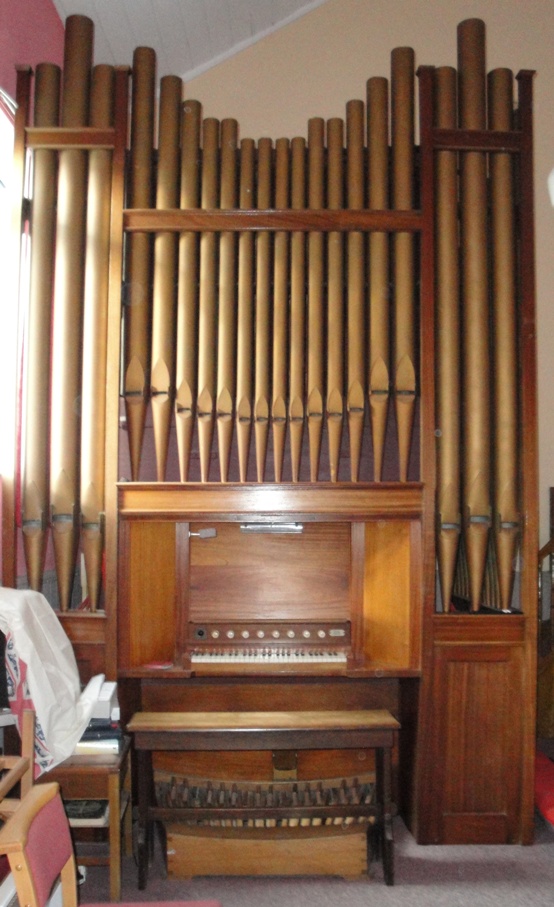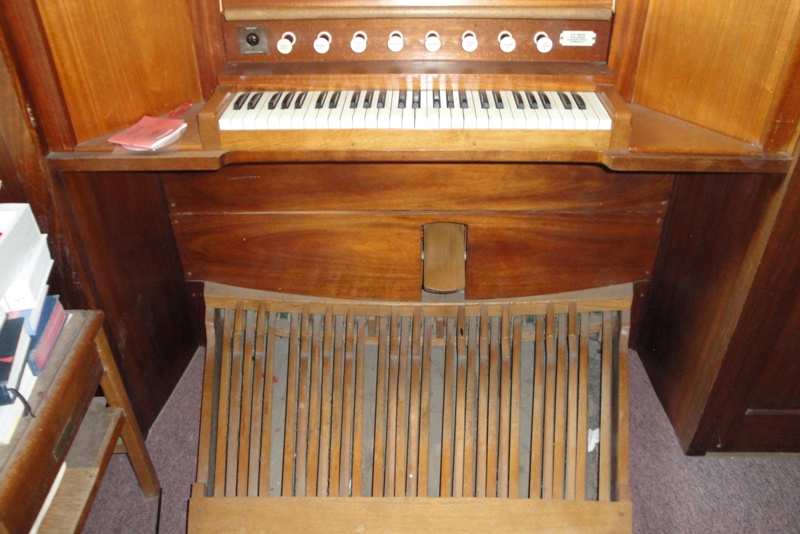The Real Pipe Organ
(Hosted on the
Raspberry Pi - a web server for £25.00
- and consuming only 5 watt!)
PLEASE NOTE: in 2021 the web address of this site changes to:
my-music.kaspencer.com (NB.: no "www")
The old site-address (www.my-music.mywire.org) will cease to
exist during 2021!
|
This page provides a brief introduction to the "real" pipe organ. |
||||||||
|
Introduction The pipe organ seems to possess many superlatives in it's descriptions. First, it dates back a very long way - quite possibly to a period at least as far back as the Ancient Greeks. Then, for many years (possibly hundreds of years) organs were the largest and the most complicated machines in existence, and could also be the loudest of all musical instruments. As it's name suggests, the pipe organ is based on creating musical notes from pipes. Of course many musical instruments consist of a pipe - the flute, the trumpet, the French horn, the saxophone and many more. But the pipe organ is more like a set mechanically blown pan-pipes, where each note has its own pipe, rather than varying the length of a single pipe so as to create the different notes, as in a recorder or flute. Organ Divisions
|
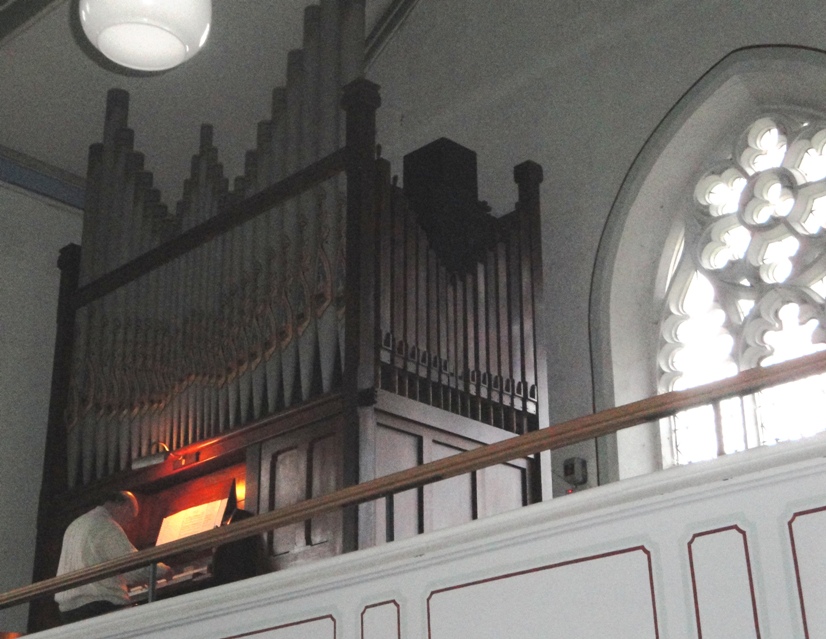
Playing the organ in a small parish church
|
|||||||
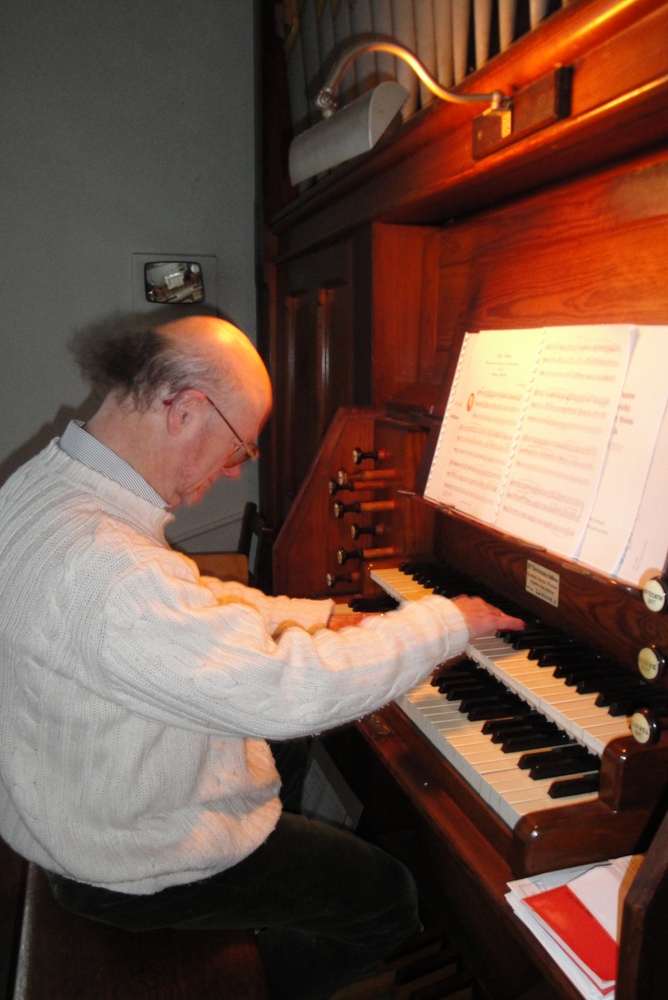 At the console of a small parish church organ |
||||||||
|
Organ Ranks
Most organ manuals cover five octaves, which is 61 notes, and the pedalboard commonly has 30 or 32 pedal keys. An organ will have several, often very many, different types of pipes. The pipes are grouped together in "ranks", each usually consists of 61 pipes for a rank in a manual division, or 30/32 in the pedal division. Within a rank, each pipe is associated with just one key of its manual, so that when that key is depressed wind is released to blow through the pipe, and the required note will be produced. The lowest notes require longer pipes, and the higher notes require shorter pipes. The length of the pipe required doubles with each octave. A manual division with 10 ranks will require 10 x 61 = 610 pipes, but large organs will have many more ranks in each division. The largest organs have well over 10,000 pipes. Each rank is "turned off" by blocking its wind supply using the stops - thus opening a stop enables pipes of that rank to speak when its keyboard is played. Types of Pipe The pipes in an organ are divided into several categories, generally depending upon how the pipe makes its speech. "Flue" pipes form the largest group, and are similar to a recorder - the air is blown across a mouth of the pipe, and the air vibrates at a pitch determined primarily by the length of the pipe. Note the it is the air which vibrates, not the pipe itself. Flue pipes are commonly metal (a lead and tin alloy), or wood. The typical "organ sound" is produced by the "diapasons" which are metal flue pipes of moderate cross-section. "Flute" pipes, also in the flue pipe group, are often of wood and of larger cross-sectional area, and produce a deeper, richer tone. "String" pipes are commonly metal, but of much smaller cross-sectional area, which makes their tone thin, resembling a stringed instrument. The string-like tone may be enhanced by producing each note from a pair of pipes tuned each to very slightly different pitch, so that a shimmering string effect is produced. "Reed" pipes work quite differently, producing their tone from a tuned brass reed which vibrates in an airstream in a similar fashion to an oboe or clarinet. Reed pipes usually produce a louder sound, with a much brighter tone. The nature of the resonator pipe attached to the reed determines the tone, and may be conical, wide or narrow. Some reeds are especially suited to playing the solo line of a tune, whereas others may be quieter and may suit blending as an ensemble. Although real-life trumpets and tubas have no reed, the organ rank of trumpet and tuba is commonly a reed in order to produce the bright tone and louder volume. Mutations and Mixtures Many organs have ranks of pipes which do not produce "C" when a "C" is played - these are called "mutation" stops. For example a stop known as the "Nasard" produces the third harmonic, which is actually the "G" in the octave above the "C" key actually played. Mutation stops are not played on their own, but when pulled with ordinary stops, they add "bite" to chords. Not all ranks have a single pipe to produce one note A well-equipped organ will have stops which play more than a one pipe to produce a single note. These stops are called "mixtures" and often three or four pipes are used per note. Mixture stops may include a mutation pipe as well, and add body and bite to the chosen sound. |
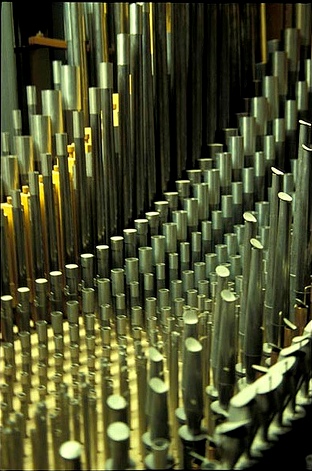 Ranks of pipes in a large organ |
|||||||
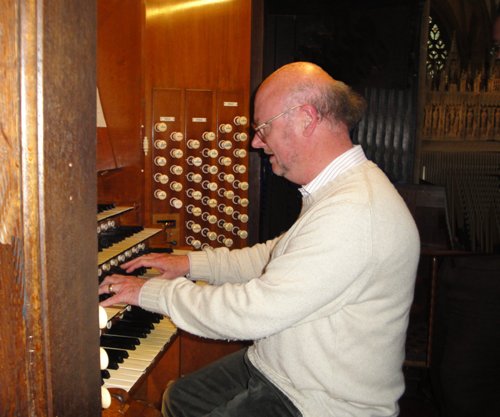 At the console of a large cathedral organ equipped with four manuals. Note the stops for three of the organ divisions on the right hand console jamb and the (smaller white) combination buttons beneath the manuals. |
||||||||
|
|
||||||||
|
Playing a pipe organ for Sunday Services Many organists play regularly on Sundays and at other times for the various church services. Here is an example of accompanying a service in a small village church which is fortunate enough to have arather nice small pipe organ, now well over 125 years old, two keyboard manuals, a pedalboard of 30 notes, and with 11 stops.
|
||||||||
|
A REAL PIPE ORGAN - AVAILABLE FOR PURCHASE and TRANSFER We are trying to find a good home for a pipe organ which is currently installed in a very small Methodist Chapel in East Anglia. The building is being reconfigured to incorporate more social space, and the organ is superfluous to requirements. The organ must be removed before 1st January 2012 as builders will start conversion work immediately after that date. (Please note: this organ has now been
successfully relocated, and is therefore no longer available Builder:
SE Gilks, Organ Builder of Peterborough. The organ is in excellent condition, having been examined, tuned and maintained in half-yearly visits until 2009. The organ has not been played regularly since 2009, and so there are a few silent pedal pipes, but no issues that would not be readily overcome by maintenance.
Terms & Conditions Contact: In the first instance, email my_music@kaspencer.com (THIS ORGAN IS NOW SUCCESSFULLY RELOCATED)
|
||||||||
|
Visit the OPUS II Organ Project page Visit the OPUS I Organ Project page |
Visit the My Guitars page Visit the Fenlanderz page |
Contact: my_music.site@yahoo.co.uk
English: the language of the world given
freely to the world by the English nation!
Do you spell the words of the English language correctly? Are you able to
distinguish verbs and nouns by their spelling?
Advice (noun)/advise (verb), aesthetic, archaeology, ardour, boulder,
cancel/cancelled, centre/centred, colour, defence, device (noun)/devise (verb),
disc, favour, flavour, fibre, glamour, goitre, jewellery, label/labelled,
licence (noun)/license (verb), manoeuvre, marvellous, marvelled, mould,
neighbour, organise, paediatrics, practice (noun)/practise(verb), recognise,
rumour, sabre, sceptic, stabilise, theatre, travel/travelled, valour.
http://englishforamericans.t15.org
